This is Part VII of The Public Medievalist’s continuing series on Race, Racism and the Middle Ages, by Marianne O’Doherty. You can buy her award-winning book The Indies and the Medieval West: Thought, Report, Imagination at Amazon.com or from Brepols Publishers.
Go back to the beginning of the series here.
The image conjured up in your mind by the term ‘Middle Ages’ is probably determined by where you were born, were educated, and live. If you are English, you likely think of the English Middle Ages; if you are French, likely the French version (and so forth). Paul Sturtevant’s research has explored the ways many young people from the US and UK intuitively think of the Middle Ages. Largely, they see it, at its broadest, as a western European phenomenon—and some even as a time period that only ever happened in England. Hollywood films and other fictional medievalisms (both historical and fantastical) in the Anglo-American world nurtures this belief, with endless iterations of the medieval set in the English landscape. But if you grew up in France, visiting Carcassone (or playing Carcassone) you would certainly think of the Middle Ages as continental European. If you grew up in Eastern Europe, your mental image of the period might well have been shaped by the art and architecture of Prague’s Golden Age under the Holy Roman Emperor Charles/Karel IV. And so on.
The global dominance of Anglo-American film, television, and historical-fantasy fiction might be homogenizing these multiple Middle Ages. But the fact remains that the Middle Ages were multiple. To some extent, they still are perceived differently depending on where you are standing. This means that you cannot necessarily designate all sorts of moments and phenomena across the globe ‘medieval’ as long as they happened around the same time. Which brings us to a question that my husband asked me when he saw the title of this piece:
Don’t You Mean “When Were the Middle Ages?” …or, “What Were the Middle Ages?”
The temporal idea of the Middle Ages is connected to geography in a fundamental (if awkward) way. The Middle Ages is a relative term, not an absolute one. This period is conventionally placed between two other (perceived) eras; the beginning of the Middle Ages is at the end of Antiquity, which is conventionally, if arbitrarily, marked by the sack of Rome in 410 and the subsequent fall of the Western Roman Empire. The end of the Middle Ages is bookended by a European renaissance that thought of itself as returning to classical ideals.

Renaissance thinkers first coined an idea of a ‘Middle Age’, and defined themselves against their medieval forebears. But from very early on, this way of looking at the past was given not just temporal boundaries, but spatial and racial ones as well. For example, Giorgio Vasari’s 1550 work Lives of the Artists characterised renaissance visual aesthetics as an Italian, specifically Florentine, phenomenon. Vasari contrasted these aesthetics with what he saw as the grotesquery of much post-Roman, pre-Renaissance art and architecture. Many of his strongest criticisms were reserved for what he called German style, a style he called “monstruous and barbaric,” in which elements “lack” order so completely “that it would be better called disorder or confusion.”
The origins of the German style were, in Vasari’s mind, Northern European. Their presence in his homeland represented alien intrusion to the Italian urban landscapes in which they had been offensively placed. He felt that those responsible for them were of another race: the gotti–the Goths.
Vasari’s history of architectural aesthetics is total nonsense. But it is fascinating nonsense, and defined many of our ideas about the Middle Ages. Vasari conflated together the standard late-medieval architectural style (that, thanks to Vasari, we now know as Gothic) with a specific gens (a tribe or race), the Goths. By doing so, he created a non-logical but powerfully emotive connection between this style and the gens responsible for the sack of Rome in 410. All sorts of implicit consequences flow from this emotive connection: the medieval is foreign; to exile the medieval is not just to become modern, but to return to our true selves.
So, in a sense, we might say that if ‘the Middle Ages’ did end up being associated more strongly with Northern Europe (broadly understood) than other places, that might be because renaissance thinkers put them there—and later people believed them. It turns out that muddling up space with time is an old habit, as is racializing thinking about temporal difference and attributing aspects of our own culture that we don’t like to other peoples, who, we then insist, rightfully belong to those other spaces and other times.
Drawing the Borders of the Middle Ages
Since we inherit our understanding of what—and where—the Middle Ages were from renaissance thinkers, what they thought matters. This is because, knowingly or otherwise, we have inherited some of their preconceptions and prejudices. The first of these is that the end of the Western Roman Empire is an epoch-defining event. But what are the implications of this for using the terms ‘Middle Ages’ and ‘medieval’ to talk about the people and places that come after that (maybe) epoch-defining event? Should we apply the terms only to places which were, at some point, conquered by the Empire?
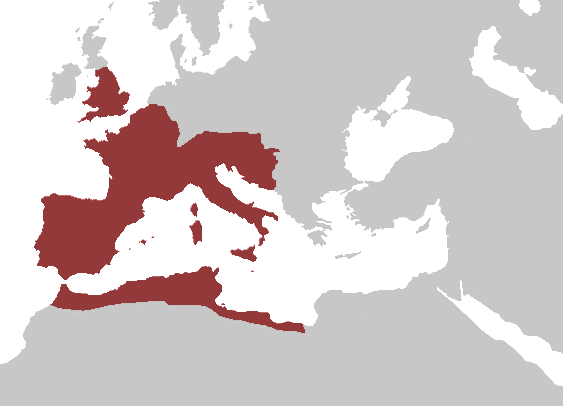
Certainly not, since that would mean we would not be able to talk about ‘medieval Ireland’ at all—even when discussing its conquest and colonisation by ‘medieval England’. And what would we say about areas at some point under the control Eastern Roman Empire, which endured until 1453 as what we know as the Byzantine Empire?
In practice, scholars tend to use the terms ‘Middle Ages’ and ‘medieval’ more as time-concepts than space-concepts. We tend to use the term to talk about a period broadly between 400 and 1500 AD. At the same time, we avoid talking too much about the problem that this produces: assuming that a supposedly epoch-defining event in Western Europe has equivalent significance elsewhere.
Across much of Europe, the period of the fall of the Western Roman Empire can very broadly be associated with some significant social and political changes. Similarly, around 1500, major cultural, theological, technological, and political upheavals (the reformation, the popularisation of print, encounters in the Americas) can, rightly or wrongly, be used as markers of significant change. But none of these matter at all in China, Japan, Ethiopia, Tabriz, Samarkand, Delhi, or the Americas.
This leads those historians (such as myself) who work on cultural interactions in particular into a difficult double-bind. We might like to think of ourselves as inclusive. We like to consider these other places to be part of ‘the medieval world’ or a ‘global Middle Ages’. But we need to be alert to the non-medievalness of such places in their own terms. Attempting to draw the whole world, and all of its peoples, into one’s own flawed historical periodization system is massively arrogant.
Let’s Go to the Map

So, we’ve opened our eyes to a wider temporal and geographical world in which the ‘medieval’ sits. But where does this alertness take us? To my mind, it opens up a couple of important questions.
- What did that wider world look like to medieval travellers who went to all sorts of places and interacted with all sorts of peoples?
- How did these interactions disrupt medieval people’s sense of their spatial and temporal space in the world? And,
- How do they disrupt our spatial and temporal sense of the Middle Ages?
First, we need to recognise that medieval peoples’ senses of their own space and time was different to our sense (whatever that sense is) of the Middle Ages. But, like the renaissance thinking that came after it, much medieval thought divided the world up into ages, and related these to particular historical moments and places.
For example, for much of the later Middle Ages, people across Europe considered their own moment to be nearing the ‘end.’ There were, though, many different ways of thinking about this. The German chronicler Otto of Freising, writing in the heartlands of the twelfth-century Holy Roman Empire, divided the world up into a sequence of Empires. He considered himself to be living in the final days of the Roman Empire (about 700 years after historians today date the end of the Empire), which was the last of these. For Otto, the Empire had gradually moved from the East westward to the German lands, where, declining and debased, it would eventually be succeeded by the coming of the Antichrist and the end of the world.
Later in the Middle Ages, the Franciscan and Dominican monastic orders created missionary orders which sought to spread Christianity to far-flung places. At the same time, there was significant Latin Christian missionary activity in Asia. As a result of both, medieval people began looking at medieval Europe’s place in time and space quite differently.
The Catalan Atlas, probably produced by the Majorcan-Jewish mapmaker Cresques Abraham in 1375, shows a much more up-to-date vision of the world than the vast majority of surviving world maps produced before it (for an amazing exception, see the works of Arab cartographer and geographer al-Idrisi, produced for the Court of Roger II of Sicily). The Catalan Atlas also seems to suggest that the world was heading towards an end. The Antichrist, whose arrival, according to the Book of Revelation, will usher in the second coming of Christ and the last judgement, is shown deceiving the faithful with false miracles. A legend at the very edge of the depicted world, in the far north east, predicts the conversion of all the world’s peoples to Christianity before the end comes.
According to the Prophet Isiah “I shall send those who are saved to the peoples of the sea, to Africa and Lydia” and “I will send to the isles far off, that have not heard my fame, neither have seen my glory; and they shall declare my glory among the Gentiles.” What we see here is a belief that the whole world, as far as the seas beyond China, is moving steadily towards a form of universal Christian empire. Once that is achieved, the multiple lands, islands and peoples that the Atlas represents will all belong to one world, and the end of the world can begin.
Imposing Yourself on the World, and Vice Versa
Like the renaissance thinkers that followed them, and like scholars today, then, medieval people tried to impose order upon the temporally and geographically disparate worlds around them. But travelling in that wider world, encountering and interacting with the real humans inhabiting it, had a tendency to disrupt these orderly visions of time and space—in particular the notion that the whole world was on a trajectory towards universal Christendom. When Popes Innocent IV and Louis IX sent envoys to the Mongol Khans in the thirteenth century, they discovered that these Eastern rulers, believing in their own ‘divine mandate to conquer the world’ expected the submission of the West.
Fantasies of the westwards movement of Empire across the world—where world dominance was thought to have begun in the East, then moved to Rome, then Byzantium, then Western Europe—were bluntly challenged by Venetian traveller Marco Polo in the 1290s. It was very clear to Polo that the Mongol Khan Kublai was not only the greatest emperor of the world at that time, but the greatest lord that the world had ever known. After travelling in the Indian Ocean in the early fourteenth century, Dominican missionary William Adam recognised the daunting scale of the task before those trying to convert all the peoples of the world in preparation for its end: “we, who are the true Christians, are not the tenth, no, not the twentieth of all men” (quoted in Larner, Marco Polo and the discovery of the World, p. 121).
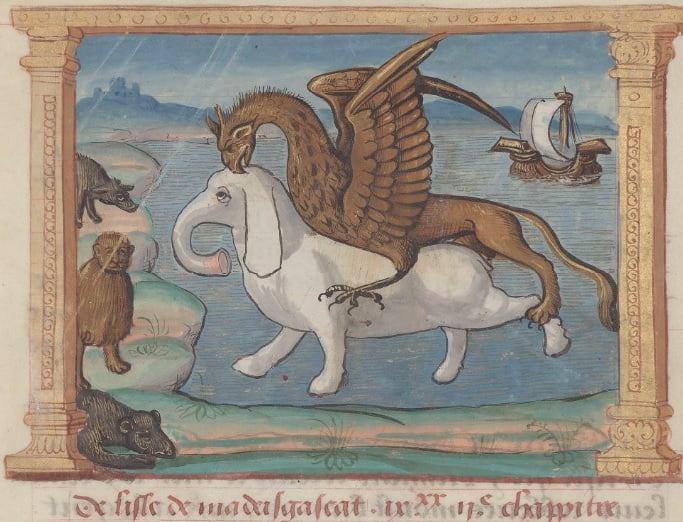
Attention to interactions across the world in the period we call the Middle Ages also disrupts scholars of the Middle Ages; it does—and should—make us all uncomfortable about the assumptions that underlie our understandings of the Middle Ages and scholarly terminology. For example, I am a scholar of texts and maps that witness cultural contact— from Marco Polo’s Divisament dou Monde (Description of the World), to Franciscan and Dominican missionary narratives, to maps like the Catalan Atlas shown here. I have lost count of the number of times it has become necessary to reach across religious traditions, languages, and cultures to understand something about a text.
Fabulous creatures such as Marco Polo’s ruc, or gryphon, a giant bird that he locates on Madagascar, belong to Arabic travellers tales and fables, from which they pass into many traditions, including the European. Sharon Kinoshita has argued that we should see Marco’s Book, which we tend to think of as European, as much a product of a Mongol literary culture as medieval European.
And then there is the almost incredible story of Pietro Rombulo of Messina, an Italian who spent most of his life in Ethiopia in the early fifteenth century, a period that one scholar has dubbed the Ethiopian Age of exploration. Rombulo spent more than a decade in the diplomatic service of the great Ethiopian king Zara Yaqob. He travelled widely in the Ethiopian’s service—seeking alliances for the kings of India, Sri Lanka, and China. Rombulo finally returned to Sicily in 1450 as Zara Yaqub’s ambassador to King Alfonso of Sicily and Aragon. Pietro’s story, captured almost accidentally in the chronicle of a humanist scholar whom he met in Naples and then buried for over four hundred years in his unread work, reminds us how much we don’t know. It shows how much has been lost of the contacts and exchanges between Western European lands and wider worlds between 500 and 1500. But it also reminds us that those white, European, Middle Ages that still often seem so central in scholarship and in popular culture are on the periphery of other important and wonderful stories.
Does the Medieval World Have Borders?
The uncomfortable truth is that, as a place-concept that involves both space and time, the ‘medieval world’ doesn’t have borders that can be drawn on a modern map. However, we can be certain that the medieval world is not a mono-cultural, white space; far from it. In the world I study, the post-Roman, Islamic regions of the Middle East and North Africa belong to the same networks of material and cultural exchange as Al-Andalus and Christian Spain, as France, Italy, England and Ireland, Greece, and so on. When medieval people viewed their world, they envisaged it as stretching from the ‘land of Darkness’ (as Marco Polo calls it) of northern Asia, to Madagascar and Sumatra in the south, and as far east as Japan. Our horizons, when we think about the Middle Ages, need to stretch across these distances and cultures too.
Continue to Part VIII: A Wonder Of The Multicultural Medieval World: The Tabula Rogeriana
The Public Medievalist does not pay to promote these articles, so we would love it if you shared this with your history-loving friends! Click to share with your friends on Facebook, or Twitter.
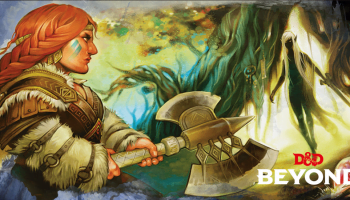
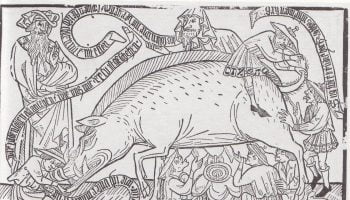

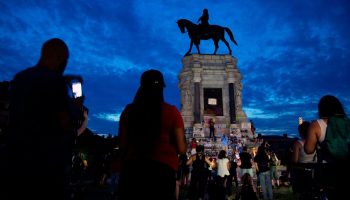

Thank you Marianne! I used this article as the basis for one of my introductory lectures, the students responded really well to it, I literally had people nodding along!
Sorry to be so late to respond, Rose; it’s been the beginning of term here – all a bit crazy. It’s great that you’re finding this useful for teaching. I’d really like to write a follow-up at some point when time allows, too, so if there’s anything you think they’d like more on/in more depth/ things not covered, let me know! Marianne